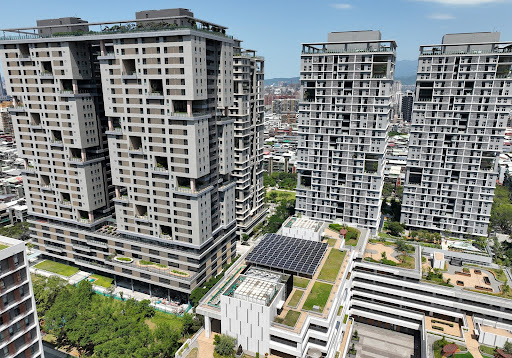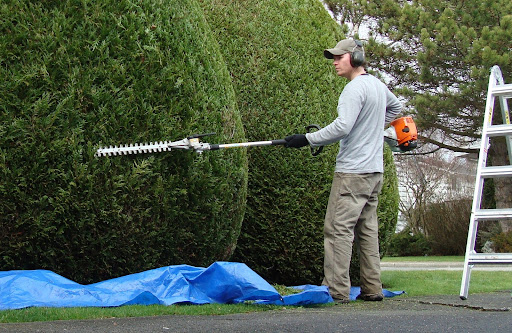
With the evolution of urban development, mixed-use communities have started gaining popularity. This type of community offers convenience and a dynamic lifestyle for its residents, but it has also become more complex to manage.
What is a Mixed Use Community?
A mixed-use community is a type of planned development that is becoming more popular. It’s a community with residential, commercial, office, and sometimes even industrial spaces in one neighborhood. These developments are designed to be dynamic and self-sustaining. They provide the convenience of letting people live close to where they can work and find leisure.
Characteristics of a Mixed-Use Development Community
Mixed-use neighborhoods have a number of defining characteristics. Here are some of them:
Variety of Uses
Unlike zoning plans in a traditional neighborhood, mixed use developments don’t separate residential areas from commercial areas. Instead, they integrate both into one area. It brings a sense of community for everyone in the neighborhood, both residents and commercial business owners and employees
Walkability

Mixed-use communities are usually pedestrian-friendly. They’re designed for walkability, with many safe sidewalks and green spaces around. They’re also designed to ensure residents can reach places of business without the need for cars. Such communities’ walkability promotes healthier lifestyles while steering clear of traffic congestion.
Sustainability
Many mixed-use community developments consider sustainability in their design. These neighborhoods typically have environment-friendly features and amenities. You’ll usually find many energy-efficient buildings and green spaces in this neighborhood. You may also find amenities that promote alternative transportation, such as bike lanes and EV charging stations.
Varied Ownership Structures
In mixed-use master-planned communities, you will usually find a variety of property types. These usually include condos, rental apartments, retail spaces, and office buildings, all with different leasing or ownership models. Given the variety of property types, a strong community association is needed to coordinate the wants and needs of all owners and tenants.
Shared Amenities and Services
Many mixed-use communities offer shared facilities such as fitness centers, communal workspaces, rooftop gardens, and entertainment venues. These amenities enhance the community’s appeal and provide additional value for residents and businesses.
Economic and Social Diversity

Adding to its dynamic personality, mixed-use communities usually attract a diverse population, including families, young professionals, retirees, and entrepreneurs. This diversity creates a vibrant social environment where people of different backgrounds interact and contribute to the local economy.
How are Mixed-Use Communities Managed?
Managing a mixed-use community requires coordination between various stakeholders, including property owners, business operators, and governing bodies. Mixed-use community association management plays an important role in ensuring smooth operations and addressing the unique challenges of these developments.
The Role of a Mixed-Use Community Association
A mixed-use community association is the governing entity for this type of neighborhood. It is responsible for maintaining shared spaces, enforcing rules, and overseeing financial operations. It works like a homeowners association (HOA) or condominium association (COA). However, in addition to the homeowners, it also needs to factor in commercial occupants.
Managing a mixed-use community association means that you will have to balance the needs of all stakeholders in the neighborhood while maintaining property values and ensuring smooth operations. Some of its responsibilities include:
Maintenance of Common Areas

Like its HOA and COA counterparts, mixed-use community associations are also responsible for shared space maintenance. This usually involves handling landscaping and maintaining sidewalks, parking lots, and other non-commercial recreational spaces. Also, part of this is ensuring it is on top of providing lighting, waste management, and drainage systems.
Maintenance work is primarily in place for numerous reasons. On one hand, it is needed to preserve property value and the community’s overall aesthetic appeal. On the other, it is crucial to keep residents safe.
Enforcement of Rules and Regulations
A mixed community needs to have clearly defined rules. These rules should be fair to both residential and commercial stakeholders. Usually, such guidelines are similar to what you can find in other community associations, such as noise, signages, and how people should act towards each other. However, this time, it must also factor in commercial space owners and their needs.
Of course, having clear rules is not enough. The community association should also enforce its policies fairly and consistently. This helps keep the peace in a dynamic neighborhood, preventing conflicts and misunderstandings between businesses and residents.
Financial Management
Proper financial management is also necessary to ensure that your mixed-use community remains sustainable in the long run. This means the association needs to collect dues, plan budgets correctly, and manage the finances well.
It’s best practice to have separate financial accounts and reserves for residential and commercial operations. This helps ensure that expenses are evenly distributed.
And with anything connected to finances, transparency in spending funds is always necessary in a community association. This means you must provide stakeholders with access to financial information and hold regular audits.
Managing Conflict
With many stakeholders with varying interests, butting heads with each other is almost expected in mixed-use communities. To minimize this, the association must have fair procedures to follow when handling these disputes.
Having a mediation protocol and strategy can help make conflict resolution easier. Clear communication channels are also best to help maintain positive relationships among property owners in the neighborhood.
Security and Safety

In any neighborhood, traditional or mixed-use, safety must be the association’s top priority. To this end, the community association can install surveillance systems, communicate and coordinate with law enforcement, or hire security personnel. Another part of this responsibility is creating emergency response plans.
When handling security measures, the association must consider all property types in the neighborhood.
Unique Challenges in Mixed-Use Communities
Managing a mixed-use community association has its challenges. Many of them, you don’t typically find in single-use developments. Here are some of them:
Balancing Residential and Commercial Needs
Having residential and commercial elements in a single area will result in competing interests. Residents were generally not to have quiet and secure environments. On the other hand, businesses rely on foot traffic and signage to flourish.
Given this, the association needs to create policies that balance the needs of both sides. They need to ensure that businesses will not disrupt the peace and comfort residents require while allowing them to operate effectively.
Parking and Traffic Management
Parking issues are rampant in mixed-use neighborhoods. Because of this, the association needs to have fair but efficient parking policies. It needs designated spaces that are distributed appropriately for residents, business owners, employees, and customers.
Other than parking policies, traffic congestion issues also need to be addressed. You need to have a smooth traffic flow in these communities to not disrupt and inconvenience the people. For this to succeed, the association needs to have a meticulous traffic management plan. If possible, it can collaborate with local authorities to optimize and implement traffic-calming strategies.
Noise and Nuisance Control
Many commercial establishments will generate noise levels. Sometimes, these can reach levels that disturb nearby residents.
The mixed-use community association can create reasonable noise control policies to avoid this. These would often include limits on late-night operations, volume restrictions, and proper soundproofing regulations.
Zoning and Compliance Issues
Zoning and building regulations in mixed-use communities can be complicated to handle. Because of this, the association needs to navigate compliance challenges carefully. Otherwise, your community may face fines, penalties, restrictions, or legal disputes.
Best Practices for Managing a Mixed-Use Community
Given the complexities involved, effective management strategies are essential for maintaining harmony and functionality in a mixed-use development community.
Establishing Clear Governance Structures
Your mixed-use association needs to have a clear governance structure. This system can help stakeholders understand their rights, responsibilities, and expectations. You may need to create separate governing documents for residential and commercial components to do this.
Your association may also need to define bylaws that address the unique needs of mixed-use properties. Establishing a board of directors with representatives from both residential and commercial sectors may also be a good idea.
Implementing Fair and Transparent Financial Policies
Fair and transparent financial policies are crucial to maintaining the long-term viability of a mixed-use community. This includes separating budgets for residential and commercial operations to ensure fair allocation of expenses, establishing reserve funds for future maintenance and capital improvements, and conducting regular financial audits to maintain transparency and accountability.
Tapping into Professional Management Services

Professional management services can streamline operations and ensure the community functions efficiently. Many associations work with mixed-use community association management companies, which provide expertise in operational oversight, legal compliance, financial administration, and conflict resolution.
Encouraging Open Communication
Open communication between residents, business owners, and the association is necessary for a well-managed mixed-use community. This can be achieved through regular community meetings to discuss concerns and updates, newsletters and digital platforms for transparent information sharing, and feedback mechanisms to address grievances and suggestions.
A Dynamic Neighborhood
A mixed-use community offers a dynamic, integrated environment where people can live, work, and socialize within the same area. By understanding the intricacies of mixed use community association management, associations can create a balanced, thriving community that benefits both residents and businesses alike.
Personalized Property Management offers professional community management services around Southern California, including mixed use community management. Call us at 760-325-9500 or send us a message if you want to know more about what we do.
Related Articles:
